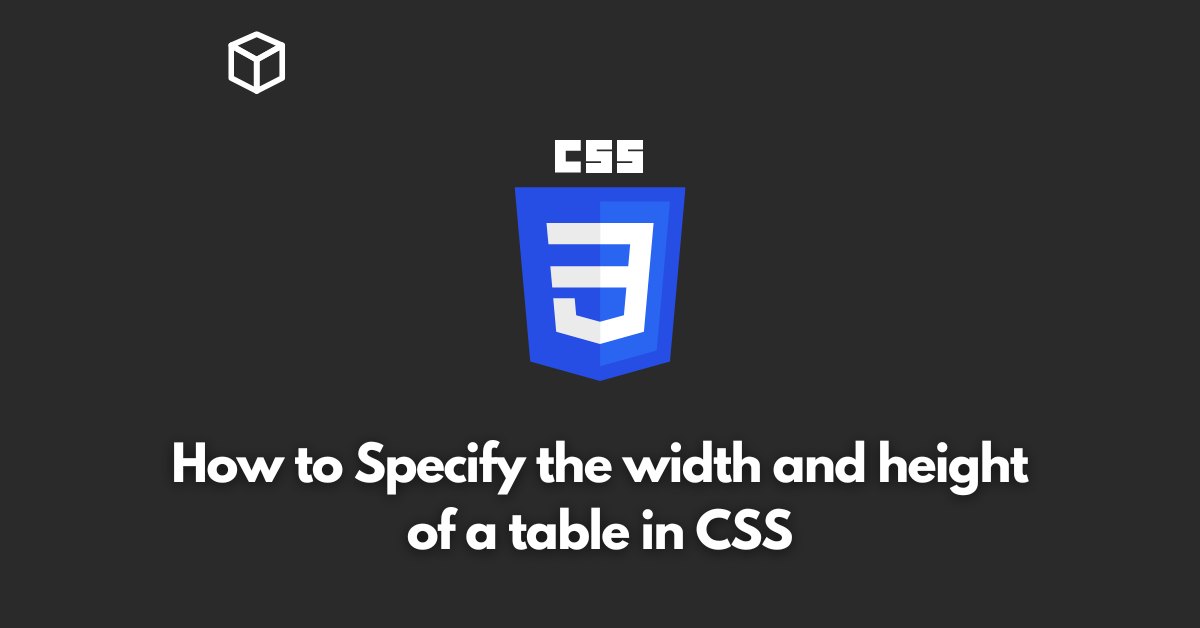Tables are a common element in web design, and they can be used to display a variety of information in an organized and easy-to-read format.
However, when it comes to styling tables, it can be a bit tricky to get them to look just right.
One aspect of styling tables that can be particularly challenging is specifying the width and height of a table.
In this CSS tutorial, we will explore how to specify the width and height of a table in CSS, and provide examples of how to do so.
First, it’s important to understand that the HTML element does not have a built-in way to specify the width and height of a table. Instead, this is done using CSS.
There are a few different ways to specify the width and height of a table using CSS, but we will focus on two of the most common methods: using the width and height properties, and using the table-layout property.
Using the width and height Properties
The width and height properties can be used to specify the width and height of a table, respectively.
The values for these properties can be specified in a variety of units, such as pixels, percentages, or ems.
Here is an example of how to use the width and height properties to set the width and height of a table:
table {
width: 800px;
height: 400px;
}In this example, we have set the width of the table to 800 pixels and the height to 400 pixels. This will cause the table to be 800 pixels wide and 400 pixels tall.
Using the table-layout Property
Another way to specify the width and height of a table is to use the table-layout property.
This property allows you to specify the algorithm used to layout the table.
The two most common values for this property are fixed and auto.
When the table-layout property is set to fixed, the width of the table and its columns is set by the width of the first row of cells.
This means that if the first row of cells is 800 pixels wide, the table will be 800 pixels wide.
Here is an example of how to use the table-layout property to set the width of a table:
table {
table-layout: fixed;
width: 800px;
}In this example, we have set the table-layout property to fixed and the width of the table to 800 pixels.
This will cause the table to be 800 pixels wide, regardless of the content of the cells.
Conclusion
Styling tables can be a tricky task, but specifying the width and height of a table is one aspect that can be easily accomplished using CSS.
By using the width and height properties, or the table-layout property, you can control the size of your tables and make them look just right.
Remember that it is always a good practice to test your code in different devices and screen sizes to make sure it looks good in all of them.
By understanding how to use these CSS properties, you can create tables that look great and are easy to read.
The examples provided in this tutorial should give you a good starting point for styling your own tables, but be sure to experiment with different values and units to find the look that works best for your website.




